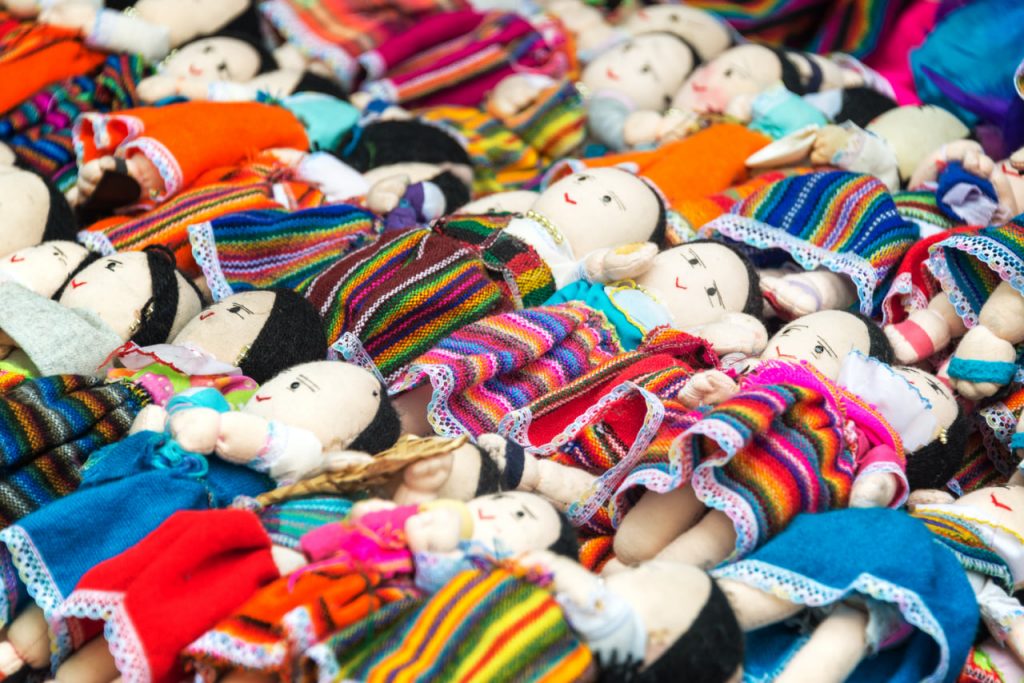One of the most rewarding aspects of doll-making is the opportunity to add personal touches that transform a simple textile doll into a unique work of art. Customization allows you to express your creativity and imbue your doll with character, personality, and charm. This guide explores three popular customization techniques—painting, embroidery, and accessories—and offers tips on how to use them effectively to enhance your textile dolls.
Painting: Bringing Faces and Details to Life
Painting is a versatile technique that allows you to add expressive details and colorful accents to your doll.
- Facial Features: Fabric paint or acrylic paint diluted with fabric medium can be used to create detailed facial expressions, including eyes, lips, freckles, and blush. Use fine-tipped brushes or fabric markers for precision. It’s best to start with light layers and build up color gradually to avoid blotching.
- Blushing and Shading: Applying soft blushes on cheeks, hands, and feet can give your doll a more lifelike appearance. Use a small sponge or dry brush to dab on pastel chalks or fabric paint, blending carefully for a natural effect.
- Decorative Patterns: Beyond faces, painting allows you to add patterns or designs to clothing or body parts. Stencils, stamps, or freehand painting can create flowers, stripes, or whimsical motifs. Always use fabric-safe paints to ensure durability and washability.
- Sealing: After painting, it’s important to seal the paint to protect it from fading or rubbing off. A clear fabric medium or fixative spray can be applied according to the paint manufacturer’s instructions.
Embroidery: Adding Texture and Expression
Embroidery is a traditional technique that brings texture, detail, and a handcrafted quality to dolls.
- Facial Features: Embroidering eyes, eyebrows, mouths, and noses with embroidery floss adds depth and personality. Simple stitches such as satin stitch, backstitch, and French knots work well for creating realistic or stylized features. Embroidery allows for subtle expression changes, from smiles to furrowed brows.
- Hair and Details: Embroidery can also be used to create hair by stitching strands directly onto the doll’s head, or for adding intricate details like eyelashes, freckles, and decorative motifs on clothing.
- Decorative Stitches: Using colorful threads and decorative stitches on clothing or accessories enhances the visual interest of your doll. You can experiment with cross-stitch, chain stitch, or lazy daisy stitches to create floral or geometric patterns.
- Durability: Embroidered details are durable and won’t fade like paint, making them ideal for dolls intended for children or handling.
Accessories: Bringing Character and Story
Accessories are the finishing touches that add personality and storytelling elements to your doll.
- Clothing: Handmade outfits tailored to your doll’s size and style help define their character. Use different fabrics, trims, and fasteners such as buttons, snaps, or velcro. Layering clothes or adding removable pieces increases playability and customization.
- Jewelry and Embellishments: Tiny beads, sequins, ribbons, lace, and buttons can serve as jewelry or decorative accents on clothing. Attach them securely with small stitches or fabric glue.
- Props and Miniatures: Consider creating small items like bags, hats, glasses, or shoes that complement your doll’s story. These props deepen the narrative and make your doll feel more alive.
- Hair Styling: Accessories like bows, headbands, and clips add charm to your doll’s hairstyle. Using yarn or wool, you can create braided or styled hair and then decorate it with these accessories.
Combining Techniques for Unique Effects
The most striking dolls often combine painting, embroidery, and accessories to achieve a multidimensional look.
- Example: A doll’s face might be painted with soft blush and eye details, embroidered eyelashes and eyebrows, and adorned with a tiny ribbon headband.
- Experimentation: Don’t hesitate to experiment by layering techniques—for instance, paint a base facial color, then add embroidered features on top. This combination creates depth and texture that a single technique alone cannot achieve.
- Balance: Strive for a harmonious balance so that the doll’s overall appearance feels cohesive rather than overwhelming. Start with subtle details and add complexity as you grow more confident.
Tips for Successful Customization
- Practice First: If you are new to painting or embroidery, practice on fabric scraps before working on your doll.
- Use Quality Materials: High-quality paints, threads, and fabrics ensure better results and longevity.
- Take Your Time: Customization is an art that requires patience and attention to detail. Allow each step to dry or set properly before moving to the next.
- Plan Ahead: Sketch your design ideas and plan color schemes before starting to avoid mistakes and mismatched elements.
- Safety: For dolls intended for children, avoid small parts that could be choking hazards and use non-toxic, washable materials.

